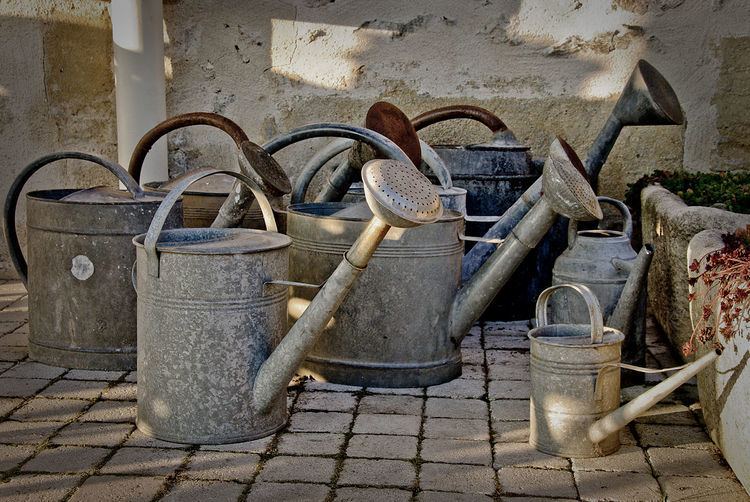 | ||
A watering can (or watering pot) is a portable container, usually with a handle and a spout, used to water plants by hand. It has been in use from at least the 17th century and has since seen many improvements in design. Apart from watering plants, it has varied uses, as it is a fairly versatile tool.
Contents
The capacity of the container can be anywhere from 0.5 litres (for indoor household plants) to 10 litres (for general garden use). It is usually made of metal, ceramic or plastic. At the end of the spout, a "rose" (a device, like a cap, with small holes) can be placed to break up the stream of water into droplets, to avoid excessive water pressure on the soil or on delicate plants.
History
The term "watering can" first appeared in the 1690s. Earlier, it had been known as a "watering pot".
In 1886 the "Haws" watering can was patented by John Haws. The patent read "This new invention forms a watering pot that is much easier to carry and tip, and at the same time being much cleaner, and more adapted for use than any other put before the public."
Modern uses
Watering cans are used by gardeners for watering plants, by road workers to apply bitumen to asphalt, as ornaments, and regularly in symbolic art pieces.
